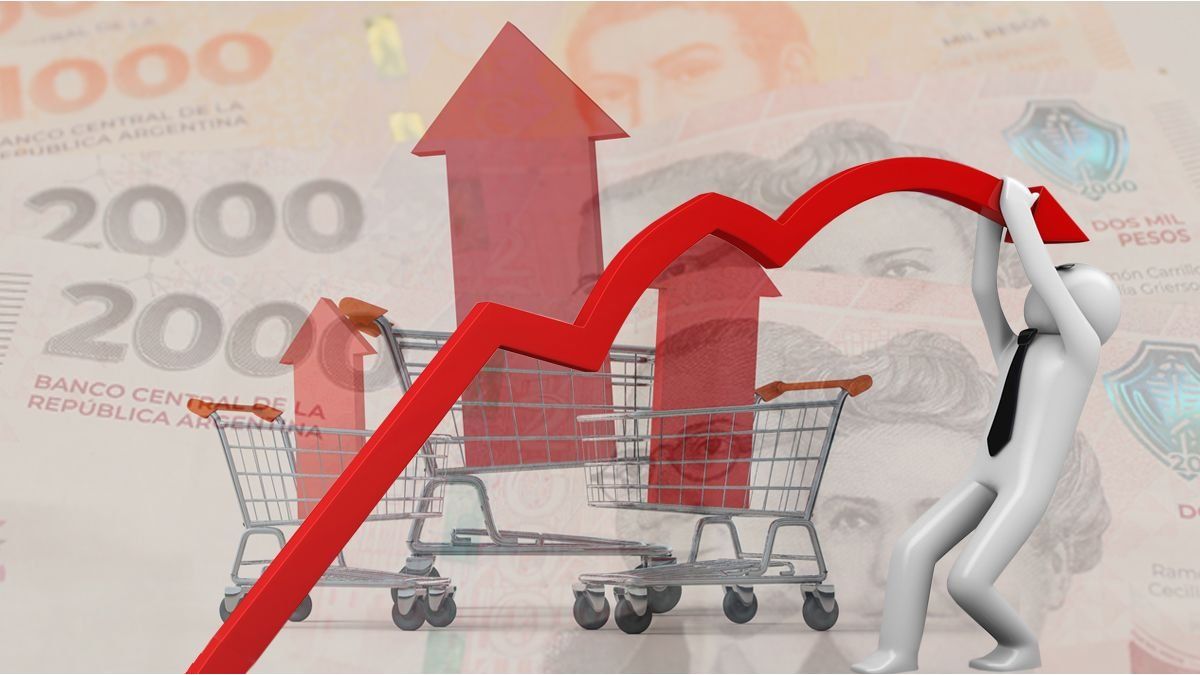The inflation and the adjustment They depress the income of the population to levels that have not been observed in more than two decades in Argentina. AND Although prices show a slowdown and single-digit monthly estimates are already beginning to appear, consumption remains repressed.
Yesterday the Market Expectations Survey (REM) of the Central Bank (BCRA) reported that inflation for April is estimated at 9% and for May at 7.5%, below previous perspectives. To which was added the ESEADE CPI, which registered a monthly increase of 7.7% in April, adding to private forecasts.
“In this way, inflation slows for the fourth consecutive month from the peak of 25.5% monthly obtained in December of last year”stated the Economics department of the university. The official data from INDEC will be released next Wednesday, May 14.
The report stressed that if this data were confirmed by the INDEC, inflation would return to a single-digit figure after five months, although still at a high level. “The outlook improves for May with projections of even lower inflation.” “said the report.
Regarding the food and beverage category, he specified that it advanced 7.9% in April, but “showing stagnation in the advance in the last two weeks of the month.”
Although inflation shows a decrease after reaching a peak of 25% in December, it would not be possible to compensate for the very strong loss of people’s purchasing power. Consumption is estimated to collapse by 10% this year while real wages – in the formal private sector – would fall on average 7%.
Only in 2025 could both disposable income and consumption recover, according to optimistic forecasts from some consulting firms.
Next year, sales in supermarkets could grow by 2.5%, activity in restaurants would show a positive result that reaches 4.5% and the sale of household appliances would grow by 12.3%, estimated the consulting firm Abeceb.
The disposable income of the population could be reduced more than twice as a result of the strong rearrangement of the relative prices of gas, electricity, water, public transport and fuel rates, which have been adjusted well above inflation, having a strong impact on pockets. .
Interannual inflation as of March was 290% but the prices of many key goods or services for daily life far exceeded this magnitude: electricity and gas increased by 300%, alcoholic beverages, 302%; food, 306%; sugar, chocolate and candy, 349%; bread and cereals, 352%; fuel and lubricants, 364%; medications, 379%; public transportation, 385%; mineral waters, soft drinks and juices, 386%.
Others that also had significant increases, but not at the level of the CPI, were prepaid, with 289% (although Justice ordered to return what was charged above inflation), restaurants and hotels, 266%, education, 227%; clothing and footwear, and housing rental, 149%. And many still must continue adjusting to make up for past delays.
The drop in sales in supermarkets is estimated to average 11% in 2024, while in restaurants it will be 7.5% this year. In March alone, the drop in supermarkets reached 19%, while restaurants recorded a loss of 6.7%.
Given this context, consumers opt for local stores (they do not make such large purchases) and choose second or third brands, in addition to being attentive and taking advantage of promotions and discounts.
In the case of household appliances, they were very relegated on the shopping list. A drop of 25% is expected for 2024 because the purchasing predisposition continues to decline in the first three months of the year, and in March, it registered a drop of 66.2%, the lowest level since the pandemic.
Source: Ambito




